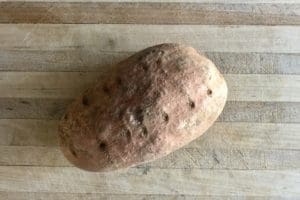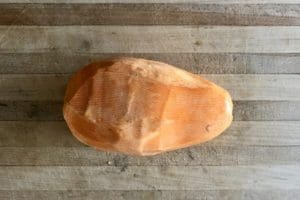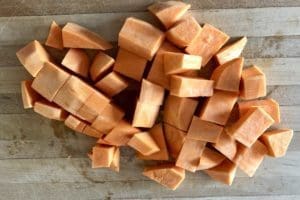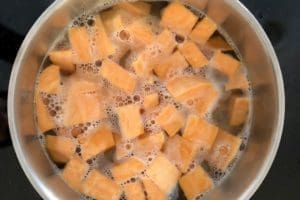
Are you excited about introducing solids to your little one but feel intimidated by making your own baby food? I was, too! Google already has a lot of helpful nutritional information and recipes but I wish I knew these five things before I started making baby food.
Forget the Blends
As the American Academy of Allergy, Asthma & Immunology explains: “Between four to six months, single-ingredient infant foods may be introduced, typically introducing fruits (apples, pears and bananas), vegetables (green vegetables, sweet potatoes, squash and carrots) and cereal grains (rice or oat cereal) one at a time. Food can be introduced this way every three to five days as appropriate for the infant’s development readiness. This slow process gives parents or caregivers a chance to identify and eliminate any food that causes an allergic reaction.”
Once a variety of single-ingredient foods are introduced, you can start blending flavors to create a more interesting meal!




But if you’re like me and don’t love cooking…I recommend skipping the blends and making single-ingredient servings (e.g. sweet potato, green beans, peas) and simply pull out a few frozen cubes, thaw and mix it in your baby’s bowl shortly before mealtime. (Hey, Mom! Thanks for the advice!)
For me, perfecting the flavor proportions was tricky. And single-ingredient cubes expose my babe to even more flavor combinations. Instead of serving sweet potato, green beans and peas as stand alone sides, I can now offer sweet potato, green beans and peas seven ways. More flexibility! More flavors! All good for baby’s palette.
Freeze a variety of fruits, vegetables, beans and meats… and have fun mixing up colorful meals. I have to remember: Just because I don’t like broccoli or peas does not mean my son won’t love them (which he does, by the way).
Understand Thin, Thick, Chunky
Some parents opt for Baby-Led-Weaning (BLW), but I was more comfortable with offering our guy pureed food for the first several months. I was unfamiliar with stage I, stage II or stage III foods when I started making my own. But I quickly learned that for him- those stages mattered.

Early on, my son gagged on thick purees – and more often on fibrous foods like sweet potato, and foods with shells, like peas. I thought he could handle food straight out of a blender, but after too many scares, I experimented with a food mill and would highly recommend one!
Cranking my blended fruits and veggies through a food mill gave me the right consistency and texture to help him learn how to swallow. Adding more breastmilk or water can also thin purees just enough to prevent gagging. As he got older, I milled less often.
Freeze Small Amounts
While I wanted my baby to eat real, fresh food, he wouldn’t eat a lot at first. Instead of throwing out half an avocado, apple or bag of green beans — cook a small batch and freeze 1 ounce serving sizes (about a tablespoon or one ice cube).
Ice cube trays work great for me, but you could freeze tablespoon dollops on wax paper and transfer to vacuum sealed bags later (another shout-out to my mom — maybe she should have written this post). In my experience, vacuum packing best prevents freezer burn, and you only need a week’s worth of food in each package.
Freeze Meals Together
My small-package concept wasn’t so great when seven different packages were open because I wanted to offer a yellow/orange veggie with a green veggie and eventually add in a fruit, too. I’d recommend freezing meal ideas together and that way you only need to open one to three packages every few days to prevent freezer burn and keep your meals fresh.
For example: freeze a few cubes of single-ingredient foods like peas and beans together and then cauliflower and asparagus together.
Get Messy
I don’t particularly love sticky fingers, but my boy loves feeding himself – and it lets him learn to eat, explore and appreciate good food. And, that’s a good thing!
Enjoy meal time together. I love talking to him while he eats – explaining the texture, color and flavor. He responds by babbling, smirking, licking his fingers, smacking his lips and kicking his feet. Just tell yourself: the mess is okay. It doesn’t take long to clean-up. And, it’s great family time.
Whether you choose BLW or puree, homemade or store-bought, organic or non-organic – teaching our little ones how to eat and enjoy meals should be fun! If you choose making your own, hopefully my experiences will make your journey a bit easier.
I’d love to know what you have learned while making baby food! Please share by commenting below!





